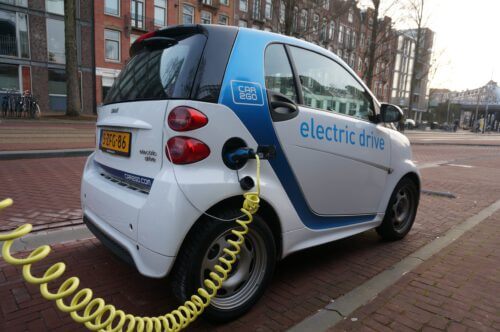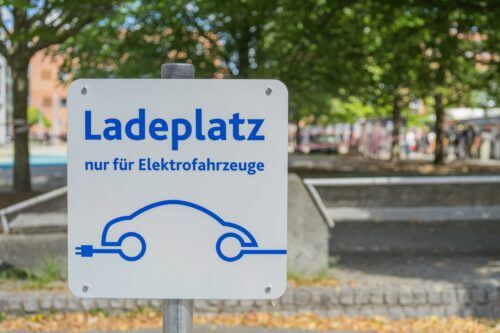The global corona crisis has somewhat slowed down the growth of electric vehicles, but the major manufacturers continue to perfect the technological innovation of the electric batteries that drive them in order to secure for themselves as large a share as possible of the electric market in the near future
Ran Ben Michael, Angle - Science and Environment News Agency

Until the economic crisis due to the COVID-19 virus, 2020 was seen as the breakthrough year for the electric vehicle, with predictions of a significant jump in sales. The slowdown in sales is particularly noticeable in China, which in recent years has led both in the production of all electric vehicles and in the growth of the market, and it is likely that the penetration of markets that are lagging behind, such as the market in Israel, will also slow down.
The transition to the use of electric vehicles is an important element in dealing with the climate crisis, because transportation is responsible for about 17 percent of greenhouse gas emissions and about a quarter of fuel consumption in the world, and therefore it is a significant negative factor in air pollution and the climate crisis.
To meet climate goals, at least 15 percent of vehicles in 2030 should be electric. Therefore, environmental policy measures encourage the adoption of electric and hybrid cars through a ban on the sale of vehicles with an internal combustion engine only (Germany starting in 2030, Great Britain in 2032, France in 2040, and Norway already in 2025). Israel also intends to limit the import of such cars in 2030, but the infrastructure here is rudimentary and the amount of electric vehicles is marginal: in the first half of 2019, about a quarter of a million electric cars were sold in Europe (double the corresponding period in 2018). According to the Electricity Authority's estimates, in 2030 there will be, in total, about half a million electric cars.
The scope of emissions of pollutants and greenhouse gases from electric cars is small and is constantly being reduced thanks to technological improvements and the expansion of the use of renewable energy in electricity production. Findings from recent years show that in most cases the emissions throughout the life cycle of electric vehicles are significantly smaller than those of internal combustion engine vehicles. Many factors affect emissions throughout the life cycle - driving style, outside temperature, urban versus intercity travel, and more - but an electric vehicle today emits throughout its life cycle, under similar conditions, about 50 percent of the greenhouse gases of an average conventional European vehicle (a trip of 150,000 kilometers over 12 years).
Electric growth engine

Until the outbreak of the corona crisis, the car manufacturers committed to investing huge capital in electric vehicles in the next decade, but the developments and innovation were hindered and the manufacturers were sent to deal with two things they do not like: a shrinking market and environmental regulation. Volkswagen, for example, has committed to investing 60 billion euros in 75 electric and 60 hybrid models by 2029 and Ford even introduced an electric prototype of the fuel-guzzling F-150 commercial vehicle. These are just two examples of a move in which the key component is the batteries: they should be cheap, allow a long driving range and charge quickly.
The battery market for electric cars will reach a value of 116 billion dollars by 2030 and the companies that manage to lead it will get to enjoy a larger share of the pie.
Indeed, at the beginning of March 2020, General Motors announced the expansion of its activities in the electric vehicle market, relying mainly on a new technology of lithium (Ultium) batteries that it is developing. The cells in these batteries have a new structure that allows them to be connected in different ways so that they fit a variety of models and suppliers. The largest of them (for private cars) produces 200 kWh and a driving range of 650 km (medium and large vans and jeeps, such as the electric Hummer, will need 350 kWh for this purpose). The batteries support fast charging and will be cheaper thanks to a smaller amount of cobalt, a rare and expensive mineral whose production has a negative environmental cost and is a required component for lithium-ion batteries.
In the luxury market, Tesla (together with Panasonic) is developing new lithium batteries that it claims will give its new Roadster model a driving range of about 1,000 kilometers.
Driving range is not the only important feature and customers also expect fast charging: if you bought an electric car, you don't want to stand for hours at the gas station to charge it. However, recent research from the University of California-Riverside indicates that current industry-standard fast charging wears down lithium batteries quickly to the point of physical damage to the battery.
To avoid this problem, Samsung recently announced a breakthrough in the development of a solid-state battery: while the lithium battery relies on liquid electrolytes in its active parts (anode and cathode - electrodes with positive and negative polarity, respectively), the new battery replaces them in solids (in this case, a combination of silver and carbon). According to the company, this technology guarantees greater power, longevity, safety, compactness, and a driving range of 800 kilometers.
Another team of researchers proposed at the end of 2019 another change in the battery material technology: today, the anode of the lithium battery is coated with graphite. The relatively modest energy content of graphite is one of the factors limiting the travel range. Silicon, on the other hand, has ten times the energy content, but is unstable when recharged. The team of researchers mixed the silicon with corn starch to create a silicon-carbon compound. This compound has a five times greater energy content compared to graphite, improves the durability of silicon and enables a full charge in 12 minutes as well as preserving 80 percent of the battery's energy storage capacity even after 500 charging cycles.
"In order to increase the penetration of electric vehicles into the Israeli market," says Dr. Uri Sharon, VP of the Israeli Association for Ecology and Environmental Sciences, "the government should resort to three types of policy tools: incentives, such as tax breaks for the consumer along with incentive packages for importers; Requiring car importers to include a fixed percentage of electric cars in their total sales (as is done in some US states); and the removal of bureaucratic and technical barriers, especially of charging infrastructure (one of the reasons for the crash of the Better Place company was the complex set-up to support the replacement of the batteries in its cars, RBM). Creating a distributed infrastructure that will allow charging anywhere - at home, at work, in the mall - is a necessary condition without which the attractiveness of electric vehicles decreases and therefore in many countries around the world charging points can already be seen in public and private spaces. The discourse in government ministries in Israel on the establishment of such a charging infrastructure is unfortunately still immature. This is an expensive investment, but it is desirable that the relevant offices promote models to encourage the entry of investors and entrepreneurs from the private market into the field."
More of the topic in Hayadan:

One response
Very conservative estimates regarding the penetration of the vehicles, what is this based on?